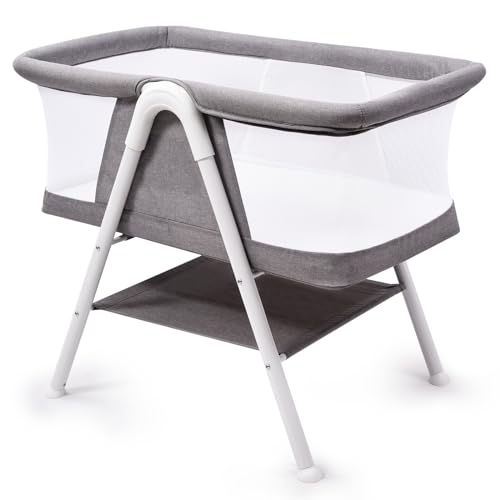The Ultimate Guide to Choosing a Baby Cot Bed: Safety, Features, and More
When it pertains to welcoming a new baby, among the most important purchases moms and dads will make is a baby cot bed. This important furniture piece is not only where a baby will sleep; it's likewise an area of convenience, security, and security. Provided the plethora of choices available on the marketplace today, making an informed choice can be overwhelming. This guide aims to streamline the process by covering essential functions, safety standards, kinds of cot beds, and far more.
Tabulation
- Intro
- What is a Baby Cot Bed?
- Safety Standards
- Kinds Of Baby Cot Beds
- 4.1 Traditional Cots
- 4.2 Convertible Cot Beds
- 4.3 Portable Cots
- Key Features to Consider
- Picking the Right Mattress
- Establishing the Cot Bed
- Frequently asked questions
- Conclusion
1. Introduction
A baby cot bed works as a dedicated sleeping area for babies and is designed to provide convenience and security. As brand-new moms and dads navigate the many options available, it is crucial to understand the different types of cot beds, security guidelines, and necessary features to make the best choice.
2. What is Best Cots ?
A baby cot bed is a specialized piece of furniture where babies sleep. Unlike regular beds, cot beds are particularly created for infants and supply a safe environment for them to rest. They usually include high sides to prevent babies from falling out and frequently come with adjustable mattress heights to accommodate a growing child.
3. Security Standards
When selecting a baby cot bed, security must be the foremost consideration. Here are some vital safety standards to remember:
- Certification: Ensure the cot bed meets national and international security requirements, such as the ASTM International and Consumer Product Safety Commission (CPSC) regulations.
- Slat Spacing: The range between slats need to not go beyond 2 3/8 inches to prevent the baby's head from slipping through.
- Stability: Ensure that the cot bed does not wobble or shake.
- Non-Toxic Materials: Check for non-toxic finishes and materials to make sure the baby's security.
4. Types of Baby Cot Beds
The market offers various kinds of cot beds, each catering to various needs. Below is an overview of the most common types:
4.1 Traditional Cots
Traditional cots are standalone furniture items designed specifically for babies. They usually include repaired sides and several adjustable bed mattress heights.
4.2 Convertible Cot Beds
Convertible cot beds can be changed into young child beds, permitting extended use. This type is an affordable option as it grows with your kid.
4.3 Portable Cots
Portable cots, likewise called travel cots or playards, are lightweight and created for families on the go. They can be quickly put together and taken apart for travel.
5. Key Features to Consider
When selecting a cot bed, parents need to think about the following functions:
- Adjustable Mattress Height: This function enables decreasing the bed mattress as the baby grows, making it easier for parents to lift the kid.
- Product Quality: Look for a cot bed made of resilient, non-toxic wood.
- Security Features: Some cot beds feature rounded edges and extra safety locking mechanisms.
- Reduce of Assembly: Check if the cot bed needs very little tools for assembly and how simple it is to take apart.
- Storage Options: Some cot beds feature integrated drawers for keeping baby basics.
6. Picking the Right Mattress
The right mattress is vital for your baby's sleep quality. Here are some ideas for selecting a suitable bed mattress:
- Firmness: A bed mattress needs to be firm adequate to avoid the baby from sinking in unfathomable, reducing the risk of suffocation.
- Breathability: Opt for breathable materials to make sure correct air blood circulation.
- Water-Resistance: Consider water resistant covers for simple cleaning and hygiene.
7. Establishing the Cot Bed
Setting up the cot bed properly is essential for safety. Here are steps moms and dads must follow:
- Choose the Right Location: Place the cot bed away from windows, cords, and other potential risks.
- Inspect the Height: Adjust the mattress height based upon the kid's age and mobility.
- Get rid of Extras: Avoid placing pillows, blankets, or stuffed toys inside the cot bed when the baby is sleeping.
- Examine Regularly: Regularly inspect all elements and screws for wear and tear.
8. FAQs
Q1: At what age should a baby transition from a cot to a bed?
A lot of children shift to a young child bed in between 18 months to 3 years, depending on their advancement and individual requirements.
Q2: How can I guarantee my baby sleeps securely in their cot bed?
Ensure the cot is devoid of soft bedding, toys, and anything that could block the baby's breathing. Follow all security standards carefully.
Q3: Is it essential to have a different nursery for the cot bed?
While lots of moms and dads choose to have a separate nursery, it is not a need. As Cots On Sale as the cot bed remains in a safe and quiet environment, it can be put in the parents' bedroom.
Q4: When is it safe to lower the bed mattress?
Generally, the bed mattress needs to be decreased when the baby can pull themselves up or when they can sit separately, generally around 6 months.
9. Conclusion
Choosing the right baby cot bed is an essential element of getting ready for a brand-new arrival. Moms and dads must focus on security, performance, and quality, ensuring that the cot bed fulfills their household's unique requirements. By taking the time to research study and comprehend various kinds of cot beds, parents can provide a safe and comfortable sleeping environment for their kid to flourish.
With cautious consideration, parents can ensure that the cot bed is not simply a piece of furnishings, however a sanctuary where their baby can sleep comfortably throughout those crucial early years.

